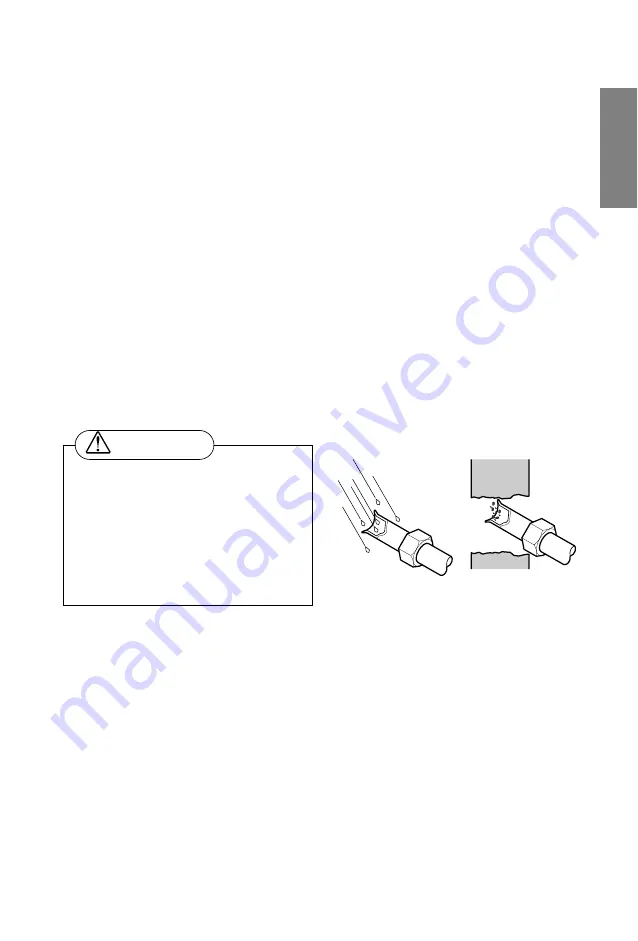
ENGLISH
6) Pipe bending
Annealed copper pipe with small diameter (ø6.35 or ø9.52) can be easily bent manually. In
this case, secure large R(radius) for the bend section and gradually bend pipe. If annealed
copper pipe is large in diameter (ø15.88 or ø19.05), bend pipe with bender. Use bender
appropriate for the pipe diameter.
7) Brazing
In refrigerant piping, bending (in particular, acute bending) must be minimized to reduce
piping resistance. Bending is, however, necessary in some places by virtue of the installation
position of devices auxiliary to the packaged air conditioner, or of the building structure,
piping distance or finsishing appearance. If a more acute bend is required than that
attainable by pipe bender, perform brazing using ready-made elbow. Aside from this
function, brazing also serves to connect straight pipes, generally using ready-made sockets.
While brazing, protect piping against heat with wet cloth to avoid damaging valve packing or
burning thermal insulator with burner heat. While brazing, blow inert gas (nitrogen gas or
carbonic gas) to prevent formation of oxidation film in copper piping; otherwise, the
refrigerant circuit will clog. The blowing of nitrogen gas (or carbonic gas) through 3-way
valves is described in the following:
8) Refrigerant piping(Flare piping)
When connecting piping, be sure to keep piping dry(keep piping away from water), clean
(keep piping away from dust) and airtight (avoid refrigerant leakage).
When connecting piping on rainy days or making a through-hall in wall, take due care to
prevent water or plaster from entering piping.
13
CAUTION
a. This procedure is designed to prevent
formation of oxidation film by filling piping
with inert gas. Note that excessive gas
pressure will generate pinholes at brazed
points.
(Nitrogen gas: Supply pressure
0.05~0.1kg/cm
2
G)
b. When supplying inert gas, be sure to open
one end of piping.
Water enters
Plaster enters






































